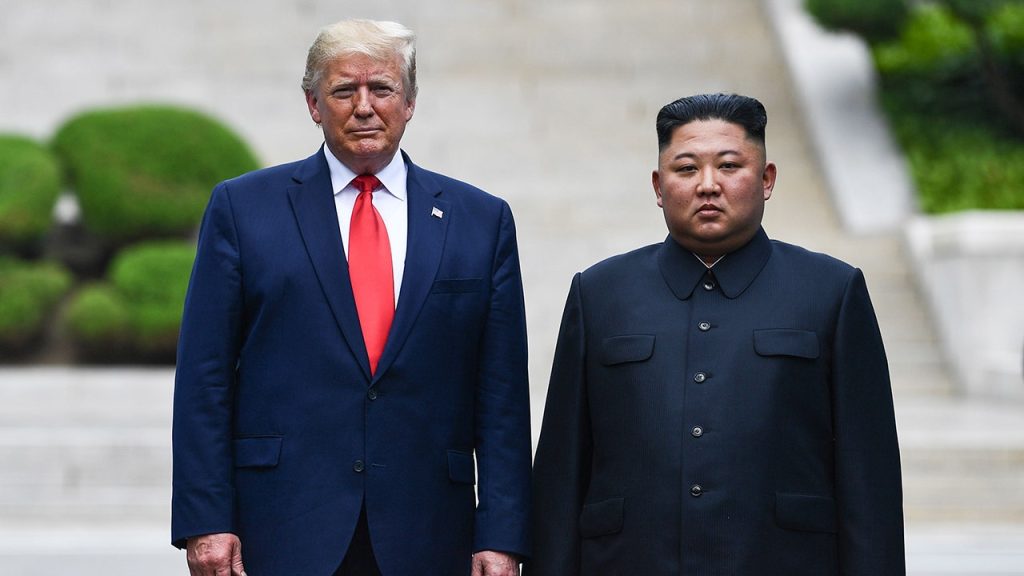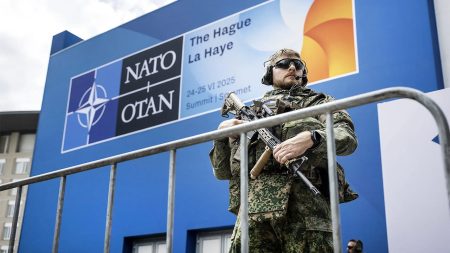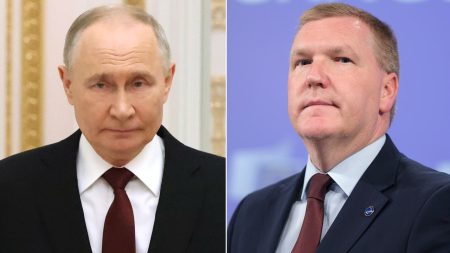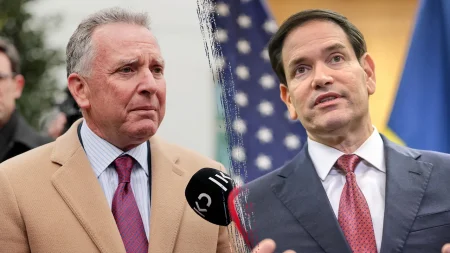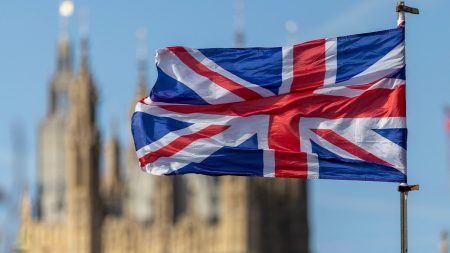Trump Open to Talks with North Korea’s Kim Jong Un as Nuclear Concerns Persist
In a significant policy stance, President Donald Trump has expressed willingness to engage in dialogue with North Korean leader Kim Jong Un “without any preconditions,” according to a White House official. This development comes at a time when concerns about North Korea’s nuclear capabilities are being voiced more explicitly by regional stakeholders. The Trump administration appears to be balancing a dual approach of diplomatic openness while acknowledging the evolving security landscape in the Korean Peninsula. A White House official emphasized continuity in policy, stating, “President Trump in his first term held three historic summits with North Korean Leader Kim Jong Un that stabilized the Korean Peninsula. U.S. policy on North Korea has not changed.” This position reaffirms Trump’s diplomatic philosophy regarding North Korea, which has been characterized by personal engagement with Kim.
The stakes in this potential diplomatic engagement have been underscored by stark warnings from South Korean Unification Minister Chung Dong-young, who recently stated in Berlin that “North Korea has become one of the three countries capable of attacking the U.S. mainland.” This assessment represents an unusually direct acknowledgment of North Korea’s advanced missile capabilities by a South Korean official. Minister Chung further emphasized that Pyongyang’s “strategic position is different” than it was during the 2018 Singapore summit between Trump and Kim, suggesting that “acknowledging this reality should be the starting point” for any new diplomatic initiatives. His frank comments highlight the evolving nature of the security challenges posed by North Korea’s weapons development.
However, security experts offer a more nuanced perspective on North Korea’s actual capabilities. Bob Peters, a senior research fellow at the Heritage Foundation, noted that while North Korea has tested intercontinental ballistic missiles for years, the critical question remains whether they possess the technical sophistication to deliver a functional nuclear warhead to the U.S. mainland. “The question, then, for a long time, is, do they have a warhead that can go underneath a nose cone on an ICBM that goes by definition, exo atmospheric, comes down and then hits a target with some semblance of accuracy and then detonate and produce a nuclear yield,” Peters explained. This technical distinction represents the difference between possessing missiles capable of reaching American territory and having a credible nuclear deterrent against the United States.
Meanwhile, Kim Jong Un has articulated his own conditions for renewed dialogue, demonstrating that any potential talks would involve complex negotiations over priorities. State media quoted Kim saying, “If the United States drops the absurd obsession with denuclearizing us and accepts reality, and wants genuine peaceful coexistence, there is no reason for us not to sit down with the United States.” This position directly challenges the long-standing U.S. goal of denuclearization of the Korean Peninsula. North Korea’s stance was further reinforced at the United Nations General Assembly, where Vice Foreign Minister Kim Son Gyong explicitly stated that his country will never abandon its nuclear program. This fundamental disagreement over denuclearization represents a significant obstacle to meaningful progress in any future talks.
The geopolitical context surrounding potential U.S.-North Korea engagement has become increasingly complex, with China playing a crucial role in regional dynamics. President Trump is scheduled to travel to Asia later this month for economic meetings with South Korean President Lee Jae-myung, though no meeting with Kim Jong Un is currently planned. Reports suggest Trump may meet Chinese President Xi Jinping during the Asia-Pacific Economic Cooperation summit in late October, reflecting the interconnected nature of security issues in the region. A senior U.S. official emphasized China’s importance to any progress on nuclear talks, stating, “The first thing that would need to happen is for the Chinese to acknowledge and be more transparent about its own programs.” This perspective recognizes that addressing North Korea’s nuclear ambitions requires considering the broader strategic environment, including China’s expanding nuclear arsenal, which U.S. estimates project will reach approximately 1,000 warheads by 2030.
Despite the diplomatic openings, the security situation remains precarious. North Korea has continued to advance its weapons programs, declaring an “irreversible hegemonic position” after testing its Hwasong-19 intercontinental ballistic missile, which it claims can strike the American mainland. The country is believed to possess approximately 50 nuclear warheads, with sufficient fissile material to produce up to 90. President Trump’s approach of maintaining openness to dialogue while strengthening deterrence reflects the complex reality of dealing with North Korea – a nation that views its nuclear arsenal as essential to regime survival. The delicate balance between diplomatic engagement and security preparedness underscores the enduring challenges of addressing one of the world’s most persistent nuclear threats, even as other international conflicts in Gaza and Ukraine have commanded greater global attention.





